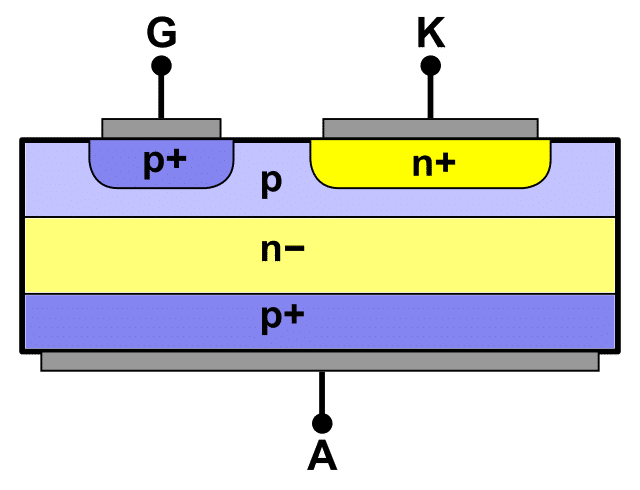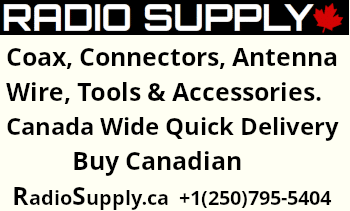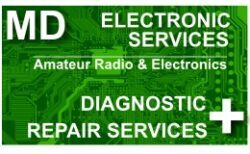
question specific learning
Transforming Knowledge Into Understanding
Hamshack.ca is completing the fully updated Basic Amateur Radio Course, built from the ground up to match the latest ISED syllabus and question bank. The new course is now in the final QA and testing stage, with launch expected shortly. It features clear, easy-to-follow lessons, embedded answers, interactive quizzes, real-world examples, and full mobile compatibility — everything you need to prepare confidently for your Basic Qualification.
The Advanced Amateur Radio Course remains fully available and unchanged. It continues to use the proven QSL (Question Specific Learning) methodology to provide deeper understanding, exam-focused content, and a highly structured learning path designed specifically for Canadian operators who want to upgrade their certification.
Contact VE7DXE
Contact VE7DXE for enrollment details and course reservations.
Log into your hamshack.ca account to access the QSL Advanced Course. Don’t have an account? No problem, request an account here. Good luck with your studies!

2.1. germanium, silicon, gallium arsenide, doping, P-type, N-type
Hamshack.ca extends its innovative Question Specific Learning (QSL) methodology to the ‘Germanium, Silicon, Gallium Arsenide, Doping, P-type, N-type‘ course, the first in the Advanced Components and Circuits section. This chapter offers a deep dive into the properties and applications of key semiconductors: germanium, silicon, and gallium arsenide, along with an exploration of the doping process and the differentiation into P-type and N-type materials. These semiconductors are crucial for their distinctive ability to conduct electricity under specific conditions while acting as insulators under others, a feature essential for manufacturing diodes, transistors, and integrated circuits. Through the QSL approach, Hamshack.ca fosters a transition from mere memorization to a profound understanding, using detailed explanations and real-life examples. This course not only prepares learners for advanced examinations but also equips them with the knowledge to innovate and optimize in the field of electronics, significantly impacting the development and functionality of modern electronic devices.

2.10. digital logic elements
The ‘2.10 Digital Logic Elements‘ course, a crucial component of the Advanced Components and Circuits section at Hamshack.ca, employs the Question Specific Learning (QSL) methodology to cover the essential aspects of digital electronics — logic gates and circuits. This chapter is vital for anyone involved in ham radio and electronics, as it lays the groundwork for understanding digital communication and processing systems. It comprehensively explores the functionalities and characteristics of various logic gates including NAND, OR, NOR, NOT, EXCLUSIVE OR, EXCLUSIVE NOR, and AND gates, as well as flip-flops, bistable multivibrators, latches, and the role of transistors in multivibrator circuits. Each component is discussed for its specific utility and features that are indispensable for designing complex digital systems. By concluding this chapter, learners will achieve a solid foundation in digital logic, enabling them to apply this knowledge in the development and optimization of electronic devices and systems across a range of applications.

2.11. quartz crystal – properties and applications
The ‘2.11 Quartz Crystal – Properties and Applications‘ course, part of the Advanced Components and Circuits section at Hamshack.ca, is designed using the Question Specific Learning (QSL) approach to illuminate the critical role of quartz crystals in radio communication technology. This chapter ventures into the detailed study of crystals, focusing on their application in various crystal-based components like lattice filters and oscillators within radio systems. It covers the operational principles of crystal lattice filters, the piezoelectric effect, and the distinctive properties of crystals that are essential for oscillator circuits. By diving into these topics, learners will understand how crystals ensure frequency stability, enhance signal filtering, and improve the efficiency of radio communication devices. This course is indispensable for those keen on mastering the technical facets of radio communications and employing crystal technology in electronic circuit designs, providing a comprehensive foundation for advancing in the field of modern radio communications.

2.12. advanced filter circuits – AF, RF
The ‘2.12 Advanced Filter Circuits – AF, RF‘ course, concluding the Advanced Components and Circuits section at Hamshack.ca, incorporates the Question Specific Learning (QSL) methodology to explore the complex world of filter circuits in audio frequency (AF) and radio frequency (RF) applications. This chapter introduces the fundamental types of filters—high-pass, low-pass, and band-pass—before diving into the specifics of advanced filters like Butterworth and Chebyshev. It provides a detailed look at resonant cavities, coaxial cavities, and helical resonators, elucidating their importance in achieving signal purity and optimizing system performance. Further, the course emphasizes the necessity of understanding filter behavior across a spectrum of frequencies, from audio to VHF and higher, enabling both enthusiasts and professionals to select and apply filters knowledgeably in various electronic and communication systems. This comprehensive coverage ensures learners are well-equipped to tackle challenges in filtering and signal processing, marking a significant step forward in their journey through modern radio communications.

2.2 diodes – point-contact, junction, hot-carrier, Zener
Hamshack.ca leverages its Question Specific Learning (QSL) methodology in the ‘2.2 Diodes – Point-Contact, Junction, Hot-Carrier, Zener‘ course, an integral component of the Advanced Components and Circuits section. This course offers an in-depth look at the fundamental role diodes play in ham radio systems, focusing on the properties, applications, and unique functions of Zener, varactor, Schottky, and junction diodes. It highlights how each diode type contributes to the stability, precision, and efficiency of ham radio circuits, with applications ranging from voltage stabilization to frequency tuning and power management. The QSL format, distinctive to Hamshack.ca, emphasizes a deep understanding through a blend of detailed explanations, real-life examples, and direct application of concepts derived from the Spectrum Management Question bank. This educational approach not only aids in preparing for advanced examinations but also in acquiring the practical skills needed for the design and optimization of electronic circuits, ensuring a comprehensive mastery over diode technology and its applications in ham radio.

2.3. transistors – NPN/PNP
Hamshack.ca’s Question Specific Learning (QSL) methodology is showcased in the ‘2.3 Transistors – NPN/PNP‘ course, a crucial part of the Advanced Components and Circuits section. This course delves into the complex world of transistors, the cornerstone components that have transformed electronics and the field of ham radio. It offers a comprehensive exploration of NPN and PNP transistors, detailing critical parameters like alpha and beta that influence their operation and efficacy. Through this course, learners will gain an in-depth understanding of how these small yet powerful semiconductors amplify and switch signals, highlighting their essential role in circuits. By examining the current flow in various configurations and the interplay between key parameters, the course provides a thorough insight into the mechanics that position transistors as the foundation of contemporary electronic devices and communication systems. Utilizing the QSL format, Hamshack.ca ensures a profound comprehension through detailed explanations, practical examples, and direct application of concepts, equipping students with the knowledge and skills to innovate and optimize in electronics, particularly in ham radio.

2.4. field effect transistor (FET), JFET, MOSFET
In the ‘2.4 Field Effect Transistor (FET), JFET, MOSFET‘ course, part of the Advanced Components and Circuits section, Hamshack.ca applies its Question Specific Learning (QSL) methodology to navigate the complex world of Field-Effect Transistors (FETs). This pivotal course in electronics and ham radio technology offers a deep dive into the characteristics and operational modes of FETs, including JFETs and MOSFETs, covering both enhancement and depletion modes. It thoroughly examines the structure, conduction mechanisms, and necessary protective measures for these transistors, providing essential knowledge for understanding their critical functions in amplification, switching, and signal modulation within modern electronic circuits. Through the QSL format, learners are guided towards a comprehensive understanding of FETs, bolstering their ability to engage with the intricacies of contemporary electronics, with a particular focus on ham radio applications. This approach ensures a deep comprehension of the material, equipping students with the skills needed to design, optimize, and troubleshoot advanced electronic systems.

2.5. silicon-controlled rectifiers (SCR)
In the ‘2.5 Silicon-Controlled Rectifiers (SCR)‘ course, integral to the Advanced Components and Circuits section, Hamshack.ca employs its Question Specific Learning (QSL) methodology to uncover the essentials of Silicon-Controlled Rectifiers (SCRs). This course illuminates the critical role SCRs play in electronics and ham radio technology, focusing on their basic principles, structural design, and operational mechanics. Learners are introduced to the three-terminal configuration of SCRs: anode, cathode, and gate, and guided through their binary operation modes—conducting and non-conducting states. The course further compares SCRs to similar semiconductor devices, such as junction diodes, highlighting their functionality when activated. By examining the diverse types and uses of SCRs, participants will understand their significance in controlled rectification, power regulation, and overvoltage protection. This exploration is crucial for anyone aiming to master the construction of durable and efficient ham radio systems. Through the QSL approach, the course ensures a thorough comprehension of SCRs, preparing students to innovate and enhance the electronics at the heart of modern communication systems.
Hamshack.ca provides original, Canadian-focused amateur radio training through its Basic and Advanced Courses, along with new courses currently in development. All instructional text, explanations, diagrams, illustrations, quizzes, assessments, and related materials have been developed exclusively for Hamshack.ca learners and form a complete proprietary educational system.
© All course content—including lessons, graphics, instructional methods, practice exams, and supporting materials—is fully copyrighted and protected under intellectual property law. Users receive a personal, non-transferable license to access the material for their own learning. Copying, sharing, redistributing, republishing, or using any part of the course content for commercial or instructional purposes is strictly prohibited without written permission from the site owner.
For full details on usage rights and restrictions, please refer to the Hamshack.ca Terms of Use.












